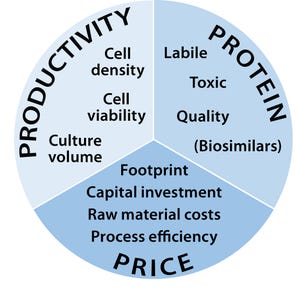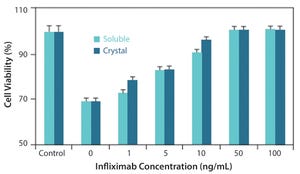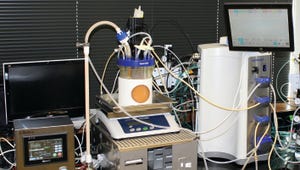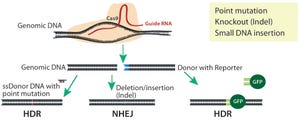This issue introduces an adjustment to our themes of coverage, which for much of BPI’s history have rotated from
production
to
processing
to
manufacturing
, with the introduction a few years ago of the “bioexecutive” focus in December. My somewhat pedantic nature always was slightly offended by the idea of separating “manufacturing” from two other themes that were also elements of manufacturing themselves, even though it was mostly just a matter of semantics. And our new product-development theme encompasses much of what that older one did, but in a more logical way. Think of “upstream production” and “downstream processing” as relating to the drug-substance aspects of biopharmaceutical development/manufacturing, and you see not only what the product-development theme covers by contrast (drug-product aspects), but also why it is necessary.
More than that, upstream and downstream are process-focused themes. And we must never lose sight of the product itself — and perhaps more important, its role in he...
Developing Standards for Clinical Research
This past fall, the nonprofit Alliance for Clinical Research Excellence and Safety (ACRES) and its partner the British Standards Institution (BSI) launched a Global Standards for Excellence (GSE) working party to develop standards for accreditation of high-performing clinical research sites around the world. The goals are to promote professionalism and excellence in clinical research; accelerate medicine development; and enhance the performance, safety, and quality of clinical trials.
Sara Monday (ACRES VP of site development and support) is the liaison between BSI and the ACRES working teams. “Our domain teams include research professionals from around the world, each working toward one common goal,” she says. “This effort will bring much-needed changes to our industry and lead to accreditation of research sites.”
Led by cochairs Arti Bajpai (president of Compliance and Quality Integration Consulting) and Amir Kalali (vice president of Quintiles), the working pa...
WWW.GRAPHICSTOCK.COM
The digital revolution in manufacturing began with an explosion in monitoring, analytics, and new computing capabilities. Combined with such advances as artificial intelligence (AI), automation, and robotics, they are changing our concepts of manufacturing in general — from product development and factory operations to materials supply. This evolution also connects product and process designers and leaders in manufacturing engineering. Digital manufacturing (DM) isn’t a dream or a concept on some advanced developer’s design table; it’s occurring now and will change industry forever (
1
,
2
).
For many years, manufacturing plants have been generating more and better data than ever before. But some companies have begun harnessing the resulting sea of information to gain valuable insights that can lead to greater efficiencies, productivities, and growth (
3
). Recent advances in the discipline of asset performance management owe much to the digital manufacturing revolution (
4
).
The ge...
An example of a combination product design: Novo Nordisk’s NordiPen growth-hormone injection device for children (WWW.NOVONORDISK.COM)
On 26 January 2015, CASSS hosted a program in its ongoing series of semiannual Chemistry, Manufacturing, and Controls (CMC) Strategy Forums at the Mayflower Hotel in Washington, DC. Since this series’s inception in 2002, each installment has focused on one of a wide array of topics spanning the fields of biopharmaceutical product development, manufacturing, analysis, quality, and regulation. For this forum, the program committee chose to devote a full program to a topic that was previously the focus of an afternoon session at their CMC Strategy Forum in July 2012: combination products (
1
).
In just the two-and-a-half years between the two programs, a great deal had transpired in the development and regulation of combination products. The US Food and Drug Administration (FDA) issued several guidance documents on topics such as pen and jet injectors and glass syringes (
2
,...
Figure 1: Drivers of continuous processing success
Biologics represent a significant group of approved drugs, and they are expected to continue their exceptional growth in the foreseeable future. At first glance, innovative monoclonal antibodies (MAbs) and their derivatives seem to dominate the field; however, biobetters, biosimilars, and other therapeutic proteins have gained in relevance lately.
This diverse portfolio also is reflected in the range of different biomanufacturing processes used. Most blockbuster antibodies are produced by mammalian cells cultured in large bioreactors (10–20 m³) in fed-batch mode. But that has not always been the case. At the beginning of the biotechnology revolution, achievable expression titers were frequently <1 g/L. That usually was not sufficient to meet demand, so perfusion processes were applied to generate larger volumes over longer production intervals with constant exchange of reactor volumes of media while cells remain in their production vessel.
Table 1: FDA-ap...
Figure 1: Comparison of soluble and crystalline infliximab in an in vitro bioactivity assay
Monoclonal antibodies (MAbs) have become important therapies and are projected to generate US$125 billion in sales by 2020 (
1
). Given that potential revenue, biopharmaceutical companies are highly motivated to find novel ways to deliver their drug products and extend patent lifetimes. Many such therapies are administered intravenously at low concentration and large volumes (
2
).
Figure 2: Comparison of pharmacokinetic profile of soluble infliximab administered subcutaneously (SC) and intravenously and of crystalline infliximab administered SC (light blue)
Althea’s Crystalomics technology facilitates delivery of traditional biotherapeutics with high concentration, low viscosity, and low volume by arranging a drug’s individual molecules in an ordered crystal lattice. The technology is a portfolio of patents surrounding crystallization, crosslinking, and complexation of proteins for therapeutic use. It includes kno...
Photo 1: Perfusion setup using Repligen’s ATF-2 cell retention device — BioFlo 320 (right) controls gassing, pH, DO, and stirring in the bioreactor (center), and the Repligen controller (left) monitors pressure and alternating tangential flow through the hollow-fiber filtration device
Recombinant protein manufacturing with Chinese hamster ovary (CHO) cells represents over 70% of the entire biopharmaceutical industry (
1
). In fact, human monoclonal antibodies (hMAbs) produced by CHO cells have played a major role in both the diagnostic and therapeutic markets for decades. One of the first human–mouse chimeric MAbs to obtain FDA approval was Roche’s rituximab treatment for non-Hodgkin’s lymphoma, chronic lymphocytic leukemia, and rheumatoid arthritis. Since that approval in 1997, scores of chimeric, humanized, and human MAbs have gained approval and entered clinical use. More are coming in the future as many blockbuster MAb-based treatments reach the “patent cliff.” Indeed, process development and optimiza...
Figure 1: CRISPR/Cas9 system for genome modification in eukaryotic cells; guide RNAs are synthesized specific to the target location to be modified, and they direct the Cas9 nuclease to make double-stranded breaks. A nonhomologous end-joining (NHEJ) repair mechanism ligates the cut ends of the DNA nonspecifically, whereas a homology-directed repair (HDR) mechanism repairs the double-stranded breaks using a donor template with homologous sequences to the cut site.
Transgenic mouse models have been an essential part of biomedical research for many decades. They have provided valuable insights in developmental biology, gene regulation, and our understanding of the genetic basis of human disease. And they play a critical role in drug discovery and development. Traditional methods to generate these mouse models entailed a milieu of disadvantages: e.g., low efficiency, high incidence of undesirable recombination outcomes, randomly and multiply inserted genes of interest, ectopic expression, gene silencing, and ...
Politically 2016 was surprising and dramatic here in the United Kingdom and elsewhere. Although it was not surprising for cell and gene therapies per se, the growth that we have seen in this industry has been pretty dramatic around the world as well.
The industry has seen investors of all types maintaining their interest in cell and gene therapy, with a number of new deals made: e.g., Bluebird bio and Medigene signed a strategic R&D collaboration and licensing agreement, and Allergan acquired RetroSense Therapeutics. Therapies also started gaining approval, and I expect that trend will continue as more come through the pipeline — particularly in oncology — over the next 12 months. It’s no surprise that big pharmaceutical companies have openly described the cell and gene therapy industry as a strong area for growth and dramatic change to patient care as well as a source of future profitability. The Cell and Gene Therapy Catapult has continued to build on this growth toward its vision for the United Kingdom...
with Orjana Terova
Orjana Terova is a purification product manager in the bioproduction division of Thermo Fisher Scientific. In a BPI webinar on 9 December 2016, she discussed the company’s custom resin program for purification of biological products. Thermo Fisher Scientific has dedicated a pilot-plant facility for this program.
Terova’s Presentation
Speed is the main development driver in downstream processing, but quality and efficiency are always critical. Purification processes need the highest resolution, capacity, salt tolerance, and operation speed possible. Consistency and reproducibility are important, as are cost minimization and mitigation of supply risk.
Adenoassociated viruses (AAVs) have emerged as the vectors of choice for many gene therapies because they can mediate long-term, tissue-specific gene expression with low immunogenicity. The biopharmaceutical industry can purify viral vectors on a scale for clinical supply, Terova said, but it needs industrialized platform technologies to max...












